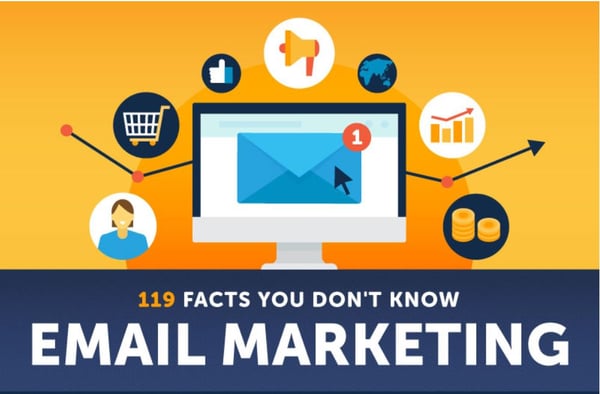 Are you wondering how to avoid spam filters? After all, a critical element of inbound marketing is being able to reach customers and prospects via email marketing messages on an ongoing basis so you can establish a relationship and nurture trust.
Are you wondering how to avoid spam filters? After all, a critical element of inbound marketing is being able to reach customers and prospects via email marketing messages on an ongoing basis so you can establish a relationship and nurture trust.
Especially if you've received permission from your visitors and prospects to do so (aka permission-based marketing). They've opted-in and want to hear from you.
Imagine how vexing, though, to have permission to send emails only to have all of your messages banished to the junk or spam folder without even the glimmer of an opportunity to connect with that person!
It's the digital equivalent of two ships - intending to meet up - passing in the night, never to connect again...
Given that I have as serious an incentive as you do to NOT let that happen, I've been on a quest for tips to keep me out of trouble, and my messages out of the trash bin, so I can make it to the Inbox and - hopefully - inspire recipients to engage further in the wisdom I have to share...
Nine Tips for Avoiding Spam Filters and Being Successful With Your Email Marketing
Here, then, are my top tips to avoid for spam filters so your messages make it - legitimately - to the inbox!
1. Don't Buy Email Lists
Or, rather, don't ever, ever buy lists! Bought lists represent people who don't know you, have never heard of you, and never asked to hear from you. Not to mention that the chance is high that most of the emails are old and no longer active.
Using bought email lists affects your reputation, making it harder for you to even make it to the inbox of people who expect to hear from you.
2. Earn Your Emails
Rather than buy lists, earn your emails. Offer opt-in email only. Collect them legitimately and then communicate regularly. When you collect them, set expectations about what you'll send out and how frequently.This goes hand-in-hand with the GDPR - General Data Protection Regulation. If you do business with the European Union, make sure you are in compliance. Even if you don't, make sure you're paying attention.
If you discover a large number of people from the European Union in your contacts database, consider communicating with them to ensure they have given you full permission. Or don't email them.
3. Keep Your Lists Clean
Lists deteriorate over time at the rate of about 25% per year; people move, change jobs, and change emails. It's important to keep your contacts database up-to-date.Monitor the health of your list on a regular basis. Regularly purge bounced and unengaged emails.
If you're doing an email send for the first time, carefully go through the list to eliminate duplicates and get rid of very old emails. Then, carefully review the results of your send so you can further clean it up.
Don't be afraid of deleting emails. The goal is not to have the biggest email list in the world. Rather, it's to have the most engaged list. An engaged list is interested in you, your business and what you have to share via email.
Do you speak to
Same goes for your email list, especially if it is a larger list. Ways for segmenting your list include:
- By geographic location
- By job title
- By company size
- By lifecycle stage
By role in the industry- By industry
Start small; break large lists into smaller lists of relevant audiences; write as if you were writing to someone you know...

5. Avoid SPAM Trigger Words in your Emails
Be aware of words in your subject lines, as well as your email message, that might trigger the various spam filters!
These include words such as "dear" and "download" and "free."
Forget about using all caps, too! That's considered shouting. Don't shout! Or get carried away with exclamation marks.
I recommend that you read (and possibly bookmark or print out for reference) The Ultimate List of Email SPAM Trigger Words.
6. Review What's in Your Junk Folders
With the list in hand, go check out items in your junk mail or spam filter.
Be on the lookout for legitimate messages and figure out why they wound up on the wrong side of the inbox.
Then, go check out the obvious culprits. You'll learn a lot from this exercise.
7. Create Engaging and Persuasive Emails
Once you get beyond the sometimes arbitrary spam filter trigger words, think about how your content - starting with the subject line and including your email message - needs to connect with your audience.
Hard sell messages don't work. However, human-sounding messages do particularly if they are so focused on the recipient that they naturally deliver value and substance. This is your opportunity to write persuasive emails and create compelling engagement.
Be user-friendly when you send
- Personalize your email. It signals you know the person and care about him or her.
- Use a recognizable sender name.
- Don't embed forms in your email.
- Make it easy to unsubscribe.
Perhaps The 6-Step Secret Sauce for Awesome Email Subject Lines will inspire ideas.
And, read How To Create Email Marketing Customers Welcome? Show Respect!
8. Be Aware of Email Deliverability Cautions
Fellow co-author and editor of The Age of Conversation Drew McLellan details several major email deliverability cautions in Oops - can't say THAT in an email! (stupid SPAM filters).
9. Gain Insights From Your Email Send Data
Track your stats. That's a benefit of using an email service provider such as MailChimp, Emma, HubSpot and Constant Contact. Even better is to integrate your email stats with your website analytics and contacts database (aka CRM).
Check out MailChimp's How to Avoid Spam Filters.
MailChimp offers suggestions on how to sift through existing email data [i.e., open rates to get insights on how your messages perform.
How to Avoid Spam Filters? Check Out These Extra Resources
Here are a few additional resources to inspire you:
>> How Not To Get More Business: 7 eMail Retail Experience Horrors!
>> How To Create Persuasive Email Marketing With Nancy Harhut
>> Email Marketing Best Practices to Get More Business! (Infographic)

Imagine What Emails Your Recipient Would Appreciate Receiving
Having detailed these tips, the best advice I have to offer for avoiding spam filters is to step back and imagine the person receiving your message. How can you ensure that s/he will be pleased to receive your message? What content are you offering that truly provides value and solves problems?
The more value and relevance you can offer, using non-sensational, trash-triggering words, the more likely you are to not only make it to the
What advice would you add to avoid spam filters and make it into the inbox?
Note: This article was originally published on August 2,








